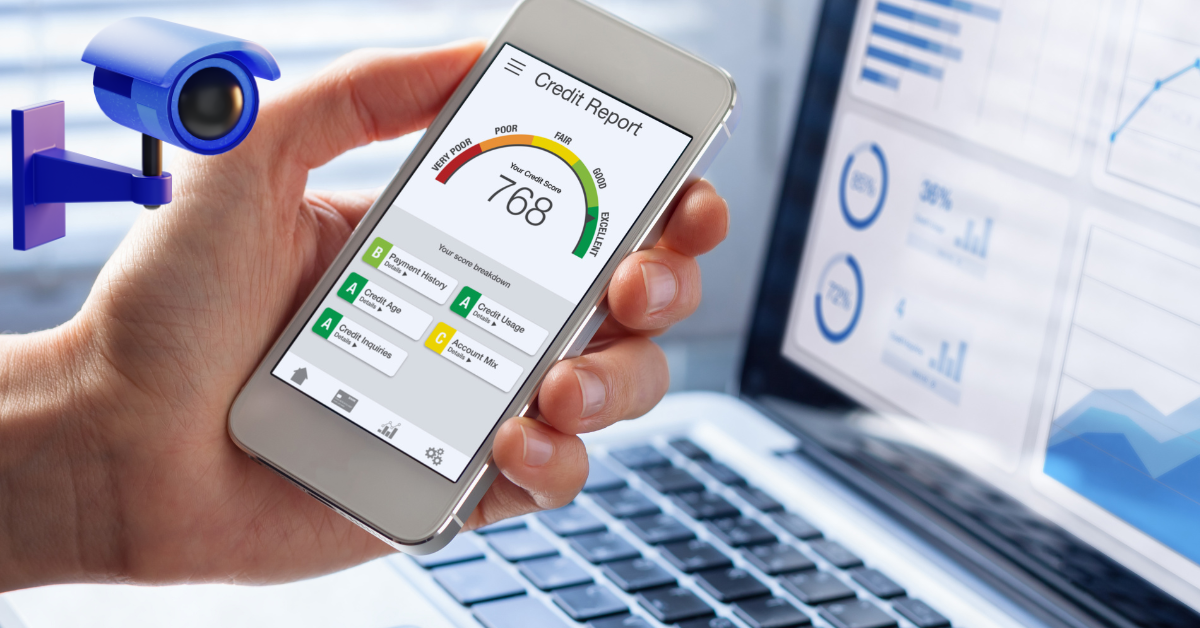The amount of data used by a security camera can vary depending on several factors, including the camera’s resolution, frame rate, compression settings, and the length of time it records. However, on average, a security camera can use anywhere from a few gigabytes to several terabytes of data per month.
I will explore how much data security cameras use and provide insights on maximizing storage space for optimal efficiency. Understanding the bandwidth requirements and storage considerations of IP cameras is crucial in today’s surveillance systems. By comprehending the factors that influence data usage and learning how to optimize camera settings, you can effectively manage data usage and storage space while ensuring smooth operation and efficient utilization of your surveillance system.
How Many Hours is 1TB of Data for a Security Camera?

The number of hours that 1TB (terabyte) of data can store depends on the bitrate or quality of the video being recorded. Here’s an estimate based on common video settings:
- For a Security camera with a bitrate of 2 Mbps (megabits per second), 1TB of data can store approximately 500 hours of video footage.
- For a higher-quality setting with a bitrate of 4 Mbps, 1TB can store around 250 hours of video.
- If the camera uses a higher bitrate, such as 8 Mbps, 1TB can store roughly 125 hours of video.
These estimates are approximate and can vary depending on the compression method, video settings, and camera activity.
Factors Influencing How Much Data Does Security Camera Use?
When it comes to Security camera data usage, Seven key factors play a crucial role in determining how much data your cameras will consume. By considering these factors, you can optimize your camera settings and make informed decisions regarding your data usage. Let’s explore these questions in detail:
1. Camera Resolution
Camera resolution refers to the number of pixels in the captured image or video. Higher-resolution cameras produce clearer and more detailed footage but require more data to transmit. If data usage is a concern, consider using cameras with lower-resolution settings that still meet your surveillance needs.
2. Frames Per Second (FPS)
FPS indicates the number of individual frames captured per second. Higher FPS results in smoother video playback but also leads to increased data consumption. Consider the intended use of your footage and adjust the FPS setting accordingly. For many surveillance scenarios, a lower FPS may be sufficient, reducing data usage without compromising the overall effectiveness of the camera system.
3. No Of Cameras On The Network
The number of cameras on your network directly impacts data usage. Each camera requires its own data stream for live viewing and recording purposes. As the number of cameras increases, so does the overall data load on your network. It’s important to assess your network’s capacity and ensure it can handle the data demands of multiple cameras simultaneously.
4 . Using Network Video Recorder (NVR)
An NVR is a device used to record and store footage from multiple cameras. If you utilize an NVR in your surveillance setup, it can affect data usage. When cameras are streaming video to the NVR for recording, additional data is transmitted. Consider the number of cameras connected to the NVR and the quality settings used for recording, as these factors will impact the amount of data consumed.
5. Cameras “Always On” Or “Trigger-Specific”
Some cameras are set to continuously record, while others are configured to record only when triggered by motion or specific events. Continuous recording consumes more data since the footage is captured and transmitted continuously. On the other hand, trigger-specific recording conserves data by capturing video only when activity is detected. Assess your surveillance needs and adjust the camera settings accordingly to optimize data usage.
6. Camera Activity

The level of activity or motion in the camera’s field of view can impact data usage. Scenes with more movement or changes in the frame require more data to capture and transmit the video.
7. Recording Settings
If the camera is set to record continuously, it will use more data compared to cameras that only record when triggered by motion or specific events.
By addressing these Seven key Factors, you can gain a better understanding of the factors influencing security camera data usage. This knowledge empowers you to make informed decisions when configuring your cameras, striking a balance between video quality and data consumption. Remember to regularly monitor and fine-tune your camera settings to ensure efficient data usage without compromising the security and effectiveness of your surveillance system.
How To Evaluate The Amount Of Data Used By A Security Camera?
Let’s consider an example to evaluate how the factors mentioned above can impact the amount of data used by a security camera. We’ll assume the following settings for the camera:
Now, let’s calculate the data usage for a month based on these settings:
- Resolution: The camera is set to a resolution of 1080p, which is equivalent to 2 megapixels. This resolution provides a good balance between image quality and bandwidth usage.
- Frame Rate: The camera captures 15 frames per second. This frame rate is suitable for most surveillance scenarios and ensures smooth video playback.
- Compression: The camera uses H.264 compression, a commonly used video codec that provides efficient compression without significant loss in quality.
- Bitrate: The maximum bitrate is set to 2048 kbps (kilobits per second). This means the camera will not exceed this value in terms of data transmission.
Based on these settings, we can estimate the data usage per month:
Resolution: 2 megapixels = 1920×1080 pixels
Frame Rate: 15 frames per second
Compression: H.264
Bitrate: 2048 kbps
Assuming continuous 24/7 recording, we can use the following formula to calculate the data usage:
Data Usage = (Bitrate / 8) * 60 * 60 * 24 * 30 / (1024^3)
Data Usage = (2048 / 8) * 60 * 60 * 24 * 30 / (1024^3) = 259.2 GB
In this example, the security camera would use approximately 259.2 gigabytes (GB) of data per month.
It’s important to note that this calculation is based on specific settings and assumes continuous recording. In real-world scenarios, data usage can vary depending on factors such as motion in the scene, lighting conditions, and video content. Additionally, adjusting settings such as resolution, frame rate, and compression can significantly impact the data usage of a security camera.
By understanding these factors and optimizing the camera settings, you can manage data usage effectively and ensure efficient utilization of your network resources.
Are Wi-Fi Cameras Worth the Data Usage?
Wi-Fi cameras offer the convenience of wireless installation and flexibility in camera placement. However, it’s essential to consider the trade-off between data usage and the benefits of a wireless setup. Factors to consider include:
- Ease of Installation: Wi-Fi cameras are easier to install and move around compared to wired cameras.
- Flexibility: Wireless cameras can be placed in areas where wired connectivity is challenging or not feasible.
- Potential Data Usage: Wi-Fi cameras may consume more data compared to wired cameras, especially if you have multiple cameras or use high-resolution settings.
Does Wired Cameras Consume Less Data Than Wi-Fi?
Wi-Fi cameras may consume more data compared to wired cameras due to potential interference, signal strength, and transmission limitations.
Solution: Over Usage Of Data By Security Camera

To reduce data consumption without compromising security, consider the following strategies:
- Optimize Camera Settings: Adjust the camera’s resolution, FPS, and bitrate settings to find a balance between video quality and data usage.
- Motion-Activated Recording: Set cameras to record only when motion is detected. This helps conserve data by capturing footage only when necessary.
- Scheduled Recording: Implement a recording schedule to capture video during specific times when activity is expected.
- Use Local Storage: Instead of relying solely on cloud storage, utilize local storage options such as SD cards or network-attached storage (NAS) devices. This reduces data usage for remote storage.
- Bandwidth Management: Prioritize critical devices on your network and allocate sufficient bandwidth to support security cameras without causing congestion. H.264 codec is widely used in surveillance systems due to its balance between video quality and bandwidth consumption. However, newer codecs like H.265 offer even greater efficiency in reducing storage requirements while maintaining video quality.
By implementing these measures, you can effectively manage data usage while maintaining the security and functionality of your Wi-Fi security cameras
Key Takeaways
- The amount of data used by security cameras varies based on factors such as camera resolution, frame rate, compression settings, and camera activity.
- Lower resolution and frame rate settings can reduce data usage and storage requirements.
- Creating different profiles for IP cameras allows customization of settings for specific purposes and efficient allocation of bandwidth and storage space.
- Managing bandwidth when using multiple cameras involves optimizing camera settings and ensuring network capacity can handle the data load.
- Regular monitoring and adjustment of camera settings optimize storage efficiency and network resource utilization in surveillance systems.
By implementing these key takeaways, surveillance system administrators and users can effectively manage data usage, maximize storage efficiency, and ensure the smooth operation of their security camera systems.
FAQ:
How can adjusting resolution and frame rate impact storage requirements?
Lowering the resolution and frame rate of a camera can significantly reduce the amount of data generated, thereby reducing storage requirements. It is important to find the right balance between video quality and storage efficiency based on your specific surveillance needs.
What is the significance of creating different profiles for Security Cameras?
Creating different profiles for IP cameras allows you to customize settings for specific purposes. By adjusting resolution, frame rate, and compression levels, you can allocate the appropriate bandwidth and storage space for each profile based on its intended use.
How can I manage bandwidth when using multiple cameras?
Managing bandwidth when using multiple cameras involves optimizing camera settings and network capacity. By adjusting camera settings to reduce bandwidth consumption and ensuring that the network can handle the combined data from multiple cameras, you can effectively manage bandwidth and maintain smooth operation.
Conclusion
In conclusion, the amount of data used by a security camera can vary based on factors such as resolution, frame rate, compression settings, and camera activity. Higher resolutions, frame rates, and continuous recording result in greater data consumption. However, by optimizing camera settings, utilizing motion-activated recording, and managing bandwidth effectively, users can minimize data usage while still maintaining the desired level of surveillance. Understanding these factors and implementing strategies to reduce data consumption allows for efficient storage usage and ensures the smooth operation of security camera systems
